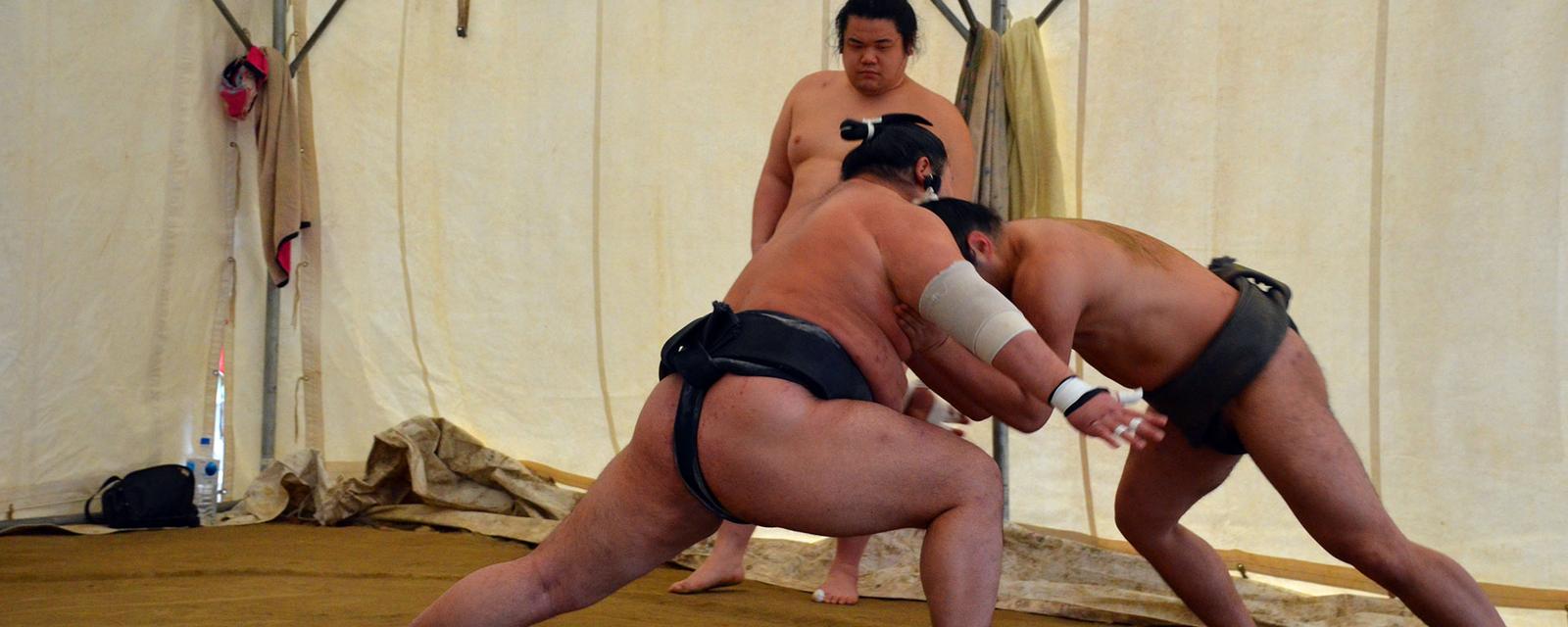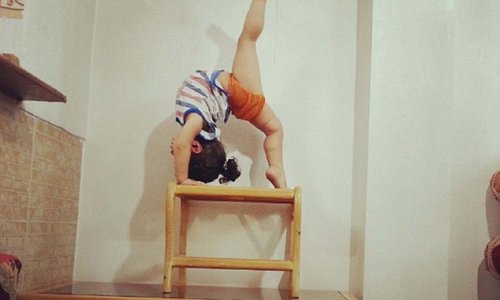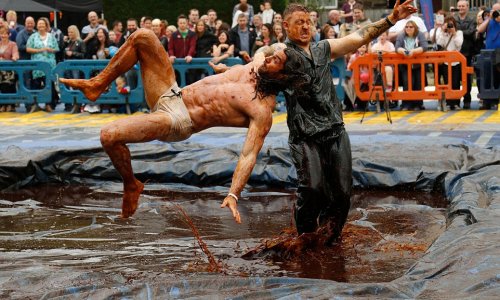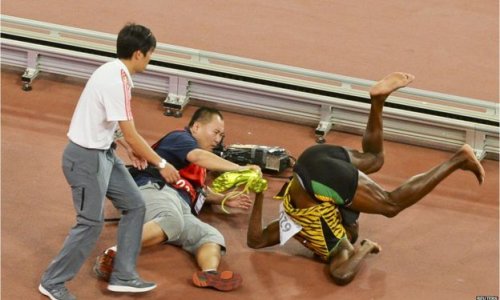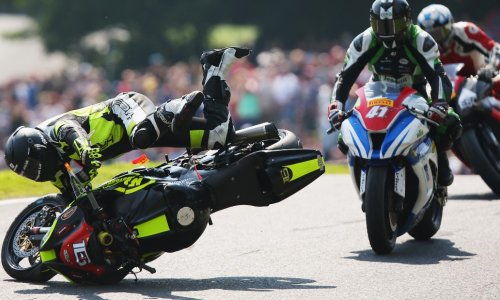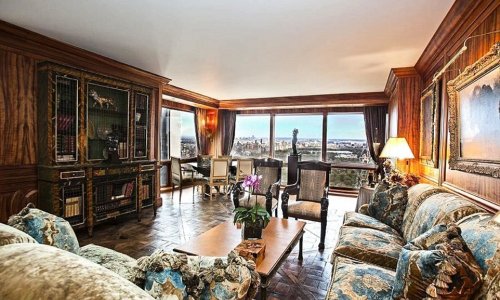Haggard and heavy, the sumo wrestlers of the Arashio stable began to stir. A young rikishi (wrestler) stumbled over sprawling camp beds and stray limbs, coaxing his colleagues out of their deep slumbers. Some opened heavy eyes, while others batted away the young novice’s attempts and returned mulishly to sleep. It was 5:30 am and cold outside – and what awaited the wrestlers was hours of bone-crunching practice in an abandoned car park in the outskirts of Osaka.
The stable – where the rikishi live and train – had temporarily moved to Osaka from its Tokyo home, so the sumos could take part in one of six annual tournaments. I had managed to get access to the wrestlers in the week leading up to the March Osaka tournament, or hon basho, and was interested to view the daily realities of this secretive sport.
After heaving themselves out of bed the rikishi washed and dressed for practice, fixing their hair into slippery chonmage (topknots) and tying the 3m-long mawashi (loincloth) around their inordinate girths. They did not eat breakfast in order to slow down their metabolisms and increase their appetites, and began the day on the longing gurgles of their empty stomachs.
The wrestlers moved like a fleet of ships bashed between high waves, tossing and rolling their bodies down a narrow staircase and into the small marquee outside. There, they set about preparing the dohyo, the sacred circular ring in which the sumo bouts are held. After the clay floor was swept and the perimeters of the ring properly demarcated, the wrestlers nursed old wounds with tape, tightened saggy loincloths and began to stretch. They bent into improbable positions with an ease not unlike the fleshy suppleness of wet clay, and with a grace that negated the slosh and sway of their heavy paunches. One wrestler, whose vast shoulders swelled up the nape of his neck, sat nonchalantly, his thick legs splayed at 90-degree angles like a gargantuan banana skin. Another pressed his head deeply into his knees, his flanks rippling like a folded mattress. All this was done in silence, with the heavy air of a religious ceremony.
Sumo is a sport shrouded in spirituality. Historians agree that sumo dates back to the Tumulus period, around the 3rd Century, when fights were incorporated into rituals and performed on the sacred grounds of temples, in the presence of priests and other religious figures. As such, many of its practices derive from Shintoism, Japan’s official religion. Starting in the 17th Century, as matches were held to raise funds for public construction projects, these rituals transitioned into a sporting event. Sumo transformed into a business and the rikishi into professionals. The celebrity of the wrestlers grew in conjunction with the sale of woodblock prints featuring famous bouts, and the secret sport of Shinto became the opium of the Japanese masses. Little by little the tangible heroism of its wrestlers began to overshadow the abstract powers of the gods, and sumo became more a spectacle than a form of prayer.
After the stretching session, the stable began its training in earnest. Some wrestlers pumped weights in furious repetitions with equally furious grimaces, while others slid and scuttled across the dohyo in a crouched position called the suriashi. A few of the younger wrestlers started with the much parodied sumo manoeuvre, the shiko, in which the wrestler rocks from side to side in series of flailing legs, deep squats and dry, shallow slaps. This exercise is designed to increase the wrestler’s core strength and, symbolically at least, stamp out evil spirits.
Sumo is intensely traditional, where everything on display has a deeper meaning and where memories of the past are manifest in physical objects. The dohyo is representative of the sacred grounds of the shrines where sumo bouts were first fought;
topknots are an ode to the hairstyles of the Samurai; and the referees, who dress in the guise of a Shinto priest, carry a dagger to signify the days when they would commit seppuku (ritual suicide) if they made an error during a contest.
The rikishi’s training routine seemed instinctive; from the stretching to the shiko, it was unquestioned, like the flow of a river. And in this same way, two wrestlers found themselves in the ring, ready to fight. They squatted opposite each other: two heads bobbing gently above clenched muscles and nervous tension; two round sweaty backs, twitching and turning; two chafing loincloths sinking deep into a quicksand of flab. Then, with no more warning than a flick of the wrist, the wrestlers threw themselves at each other and the deep suck of compressed air on loose flesh reverberated around the marquee.
Both men gouged, pounded and pulverised until one lost his balance and was barrelled out of the ring. Back on their feet and gasping for breath, the wrestlers dusted themselves off and politely bowed to one another. There was neither disappointment in loss nor smugness in victory, just a silent, respectful return to their positions.
This sense of respect was heightened with the arrival of the stable’s most senior wrestler. Soukokurai is Chinese of Mongolian descent, and one of the top ranked wrestlers in the sport, where his bouts broadcast to millions on national television. He even has his own fan club. Weighing 140kg, with hands like buckets and a face as flat as a plate, he waded into the marquee as if against a strong current of water and assumed a position in the corner. He wore the crisp white mawashiof a sekitori (a high ranked competitor), and looked on calmly, while his juniors were diffident in their respect. In the ring he wrestled with the same ease that he displayed outside of it. While his young, strident opponents flung themselves forward with bone-crunching crudeness, he collected their callowness calmly, and guided it out of the ring. The harder the young rikishi tried, the more relaxed he seemed to appear.
"All the young wrestlers want to be sekitori, but they don’t have the chance to fight a wrestler of that level in competition,” Soukokurai told me. "That’s why they have a lot of motivation to beat me in practice.”
Most new recruits are scouted at the age of 15, straight from high school, and come to sumo in search of glory and wealth. They want to live the life of a sekitori, with their own fan clubs, mountains of prize money and a retinue of servants. Yet, what they find is an unenviable combination of exhaustion and humiliation. The sekitori are exempt from many chores, are free to marry and live outside of the stable, but the novice rikishi are expected to cook, clean and tend to the needs of their seniors, as well as train many hours every day.
In between fighting, the wrestlers practise an exercise known as bukari-geiko, in which one wrestler throws himself at his ready companion and drives him from one side of the ring to the other, completing the exercise only when the inactive rikishi has been driven out of the dohyo. Once done, both wrestlers turn around and the inactive rikishi is driven back to where he came from. This drill is repeated approximately six times – each time the deadweight of the passive wrestler’s body getting heavier and heavier.
One of the younger wrestlers, exhausted after only his third repetition of the drill, struggled helplessly to push his much larger companion out of the ring. He bellowed and gasped, his fatigue turning into to lethargy and then slumping into concession. His muscles limp, his eyes shut, he seemed to cradle in the arms of his partner, all the momentum drained from his bulk. Around him, nobody moved or offered encouragement. The other wrestlers remained outside of the ring, continuing with their shikos and their stretching, indifferent to what was going on within in. For several minutes, the struggling wrestler just stayed there, as if asleep. His partner looked on askance.
Finally, unable to summon anymore energy the young rikishi gave up and walked out of the ring. Panting deeply, an indistinguishable grimace of tears and exhaustion scrunched on his face, he hid himself in one of the corners of the marquee and turned his back to his companions.
"The life of a young sumo is a tough one,” Soukokurai said. "You have to be patient, strong and disciplined, and if you’re all of those things, then maybe you’ll make it.”
The rest of the morning continued in a relentless musk of masculinity and the damp thwack of heavy flesh. The breathing got heavier, and bout after bout showed on the wrestlers’ bodies in burst skin, burning red slaps and deep black bruises. At around noon, their abundant flesh still aquiver from four hours of bruising bouts, the rikishi settled down to lunch: 11 brawny boulders sitting cross-legged around a low dining table in a room next to their sleeping quarters. Again hierarchy was enforced, the senior wrestlers eating first.
For both, however, the menu was the same. Chankonabe (or "chanko”, as the rikishi refer to it) is the staple meal of the sport. It is made out of a combination of dashi (broth), mirin(a weak form of sake), bok choy, chicken and a plethora of other brawny meats. The average wrestler consumes between six to 10 bowls per meal – around 10,000 calories – although the retired wrestler Takamisugi became famous when he reportedly ate 65 bowls of chankonabe in one sitting. Since there is no weight limit in the sport, competitors seek out advantage through sheer size.
The room was a cacophony of deep gurgling slurps and light conversation. Goushi, a 126kg, 21-year-old wrestler, sat patiently as a tokoyama, the rikishi’s personal hairdresser, tended to his topknot. Behind him, Soukokurai was being interviewed by the stable’s press agent, who fumbled and stuttered nervously in front of his hero. The rest of the rikishi, bending deeply into their bottomless bowls, concentrated only on their food; no conversation was worth more than what they had in front of them. And for a moment there was a sense of ease, of joviality and blitheness, where neither unbending tradition nor the prospect of training was imminently oppressive.
(BBC)







www.ann.az
Follow us !

